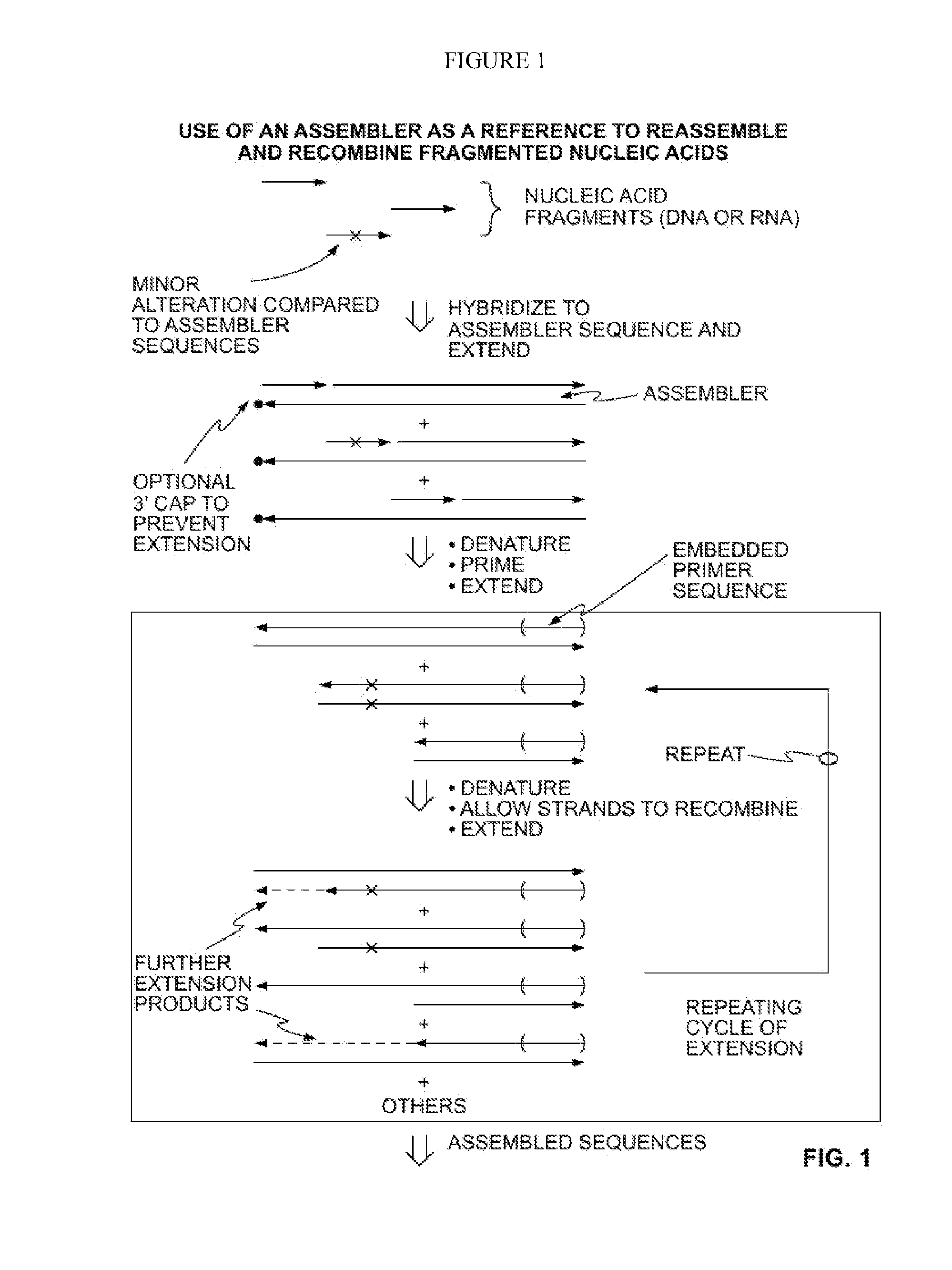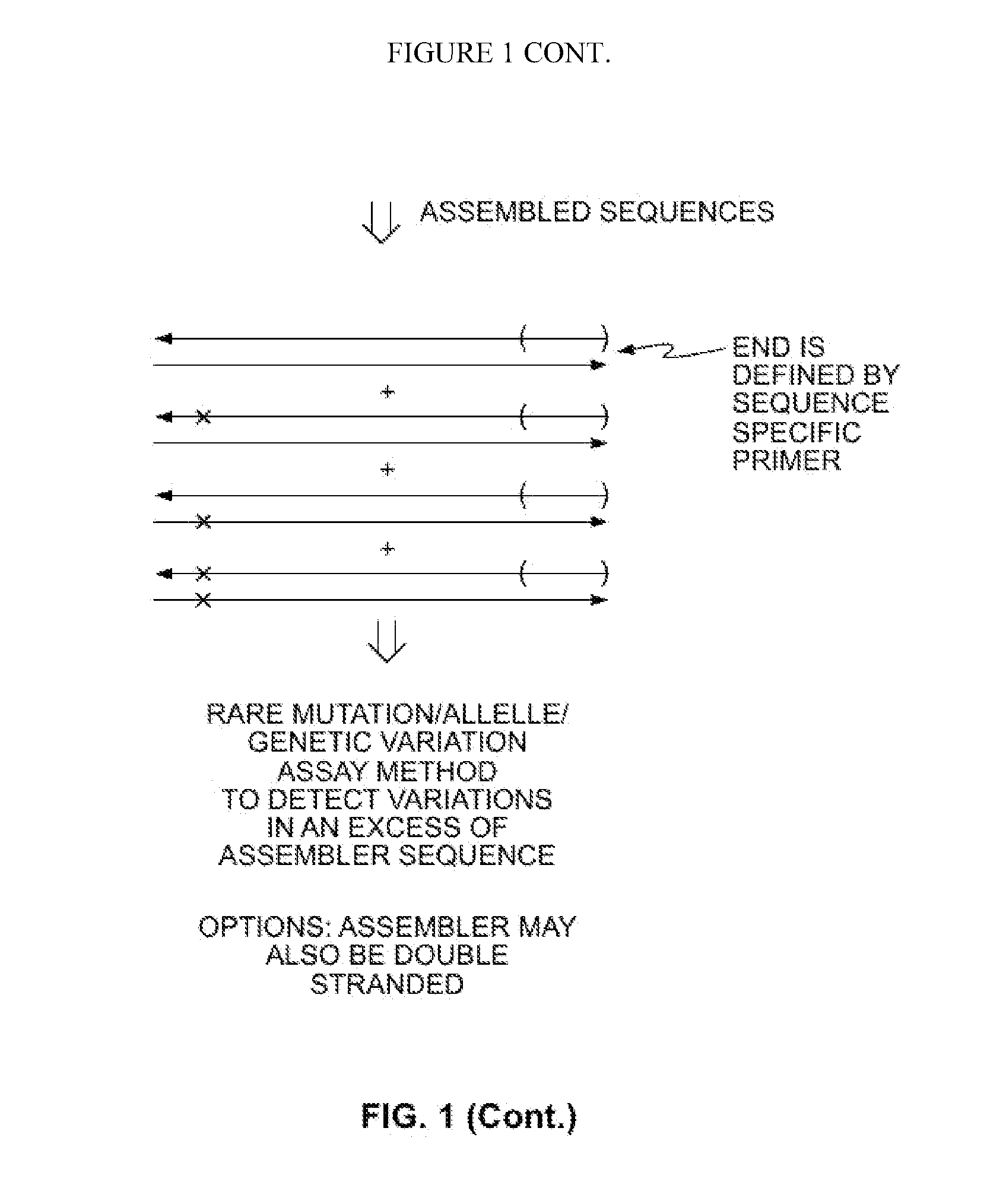Methods for Amplifying Fragmented Target Nucleic Acids Utilizing an Assembler Sequence
- Summary
- Abstract
- Description
- Claims
- Application Information
AI Technical Summary
Benefits of technology
Problems solved by technology
Method used
Image
Examples
Embodiment Construction
[0029]Unless defined otherwise, all terms used herein have the same meaning as are commonly understood by one of skill in the art to which this invention belongs. All patents, patent applications and publications referred to throughout the disclosure herein are incorporated by reference in their entirety. In the event that there is a plurality of definitions for a term herein, those in this section prevail.
[0030]The term “oligonucleotide” as used herein refers to a polymeric form of nucleotides, either ribonucleotides or deoxyribonucleotides, incorporating natural and non-natural nucleotides of a length ranging from at least 2, or generally about 5 to about 200, or more commonly to about 100. Thus, this term includes double- and single-stranded DNA and RNA. In addition, oligonucleotides may be nuclease resistant and include but are not limited to 2′-O-methyl ribonucleotides, phosphorothioate nucleotides, phosphorodithioate nucleotides, phosphoramidate nucleotides, and methylphosphon...
PUM
 Login to View More
Login to View More Abstract
Description
Claims
Application Information
 Login to View More
Login to View More - R&D
- Intellectual Property
- Life Sciences
- Materials
- Tech Scout
- Unparalleled Data Quality
- Higher Quality Content
- 60% Fewer Hallucinations
Browse by: Latest US Patents, China's latest patents, Technical Efficacy Thesaurus, Application Domain, Technology Topic, Popular Technical Reports.
© 2025 PatSnap. All rights reserved.Legal|Privacy policy|Modern Slavery Act Transparency Statement|Sitemap|About US| Contact US: help@patsnap.com


